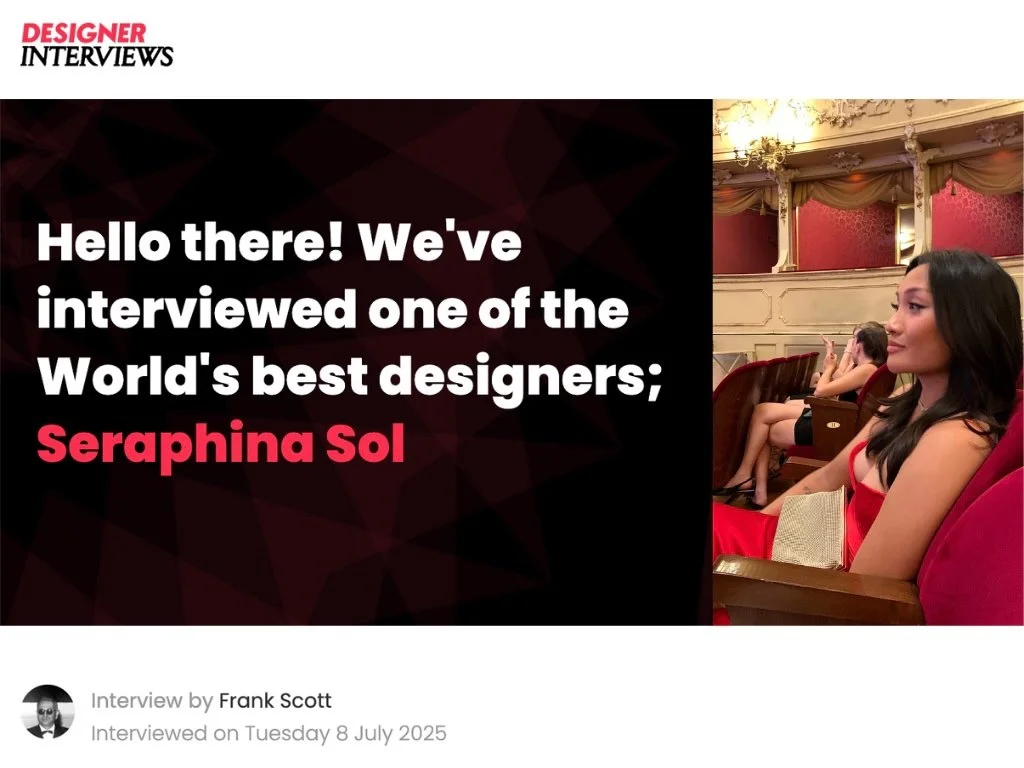Designer Interviews: Seraphina Sol on Drawing the Invisible Threads Between Art, Design, and Sustainability
July 8, 2025, Rome, Italy – Multidisciplinary Artist Seraphina Sol, creates work that brings together art, design, and sustainability, with a focus on social and environmental impact. She was recently featured on Designer Interviews, an international platform highlighting influential voices in contemporary creative practice.
In a conversation led by Editor, Frank Scott, Seraphina shares insights into a practice shaped by ecology, collaboration, and a quiet, persistent curiosity that drives her artistic sensibility. With a background in fine art, scientific illustration, and architectural design, her work dwells at the threshold between observation and imagination, between what we see and what we begin to understand only by looking more closely.
Based in Toronto, Canada and working globally, Seraphina Sol has carved out a studio practice rooted in careful observation, material sensitivity, and environmental care. Her work—particularly the ongoing series Field Notes Botanical Illustration—explores native and endangered plant life with both scientific exploration and artistic inspiration. In her botanical illustrations, each leaf and petal becomes a site of reflection on the natural environment, rendering the delicate systems of life visible, memorable, and meaningful.
From hand-inked drawings on seed-embedded paper to public artworks created in collaboration with scientists, architects, and sustainability experts, her practice reminds us that design is not only about beauty, but about impact.
“Design, for me, is a way of connecting disciplines. It is how we see more deeply. It is how we remember that we belong to the living world”, says Seraphina Sol.
Through this interview, Seraphina Sol reflects on the evolving responsibilities of design in the context of climate and community. Her words invite pause—slowing down for closer observation in an era that often moves too fast.
This feature is not only an exploration of her process, but a quiet call to reimagine design as a restorative act.
Read the full interview at Designer Interviews here.
